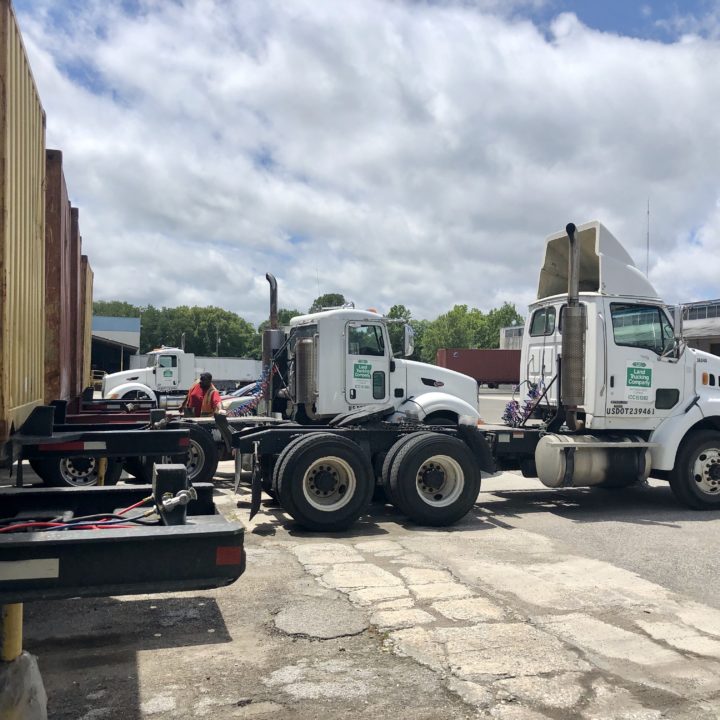Logistics is generally the detailed organization and implementation of a complex operation. In a general business sense, logistics is the management of the flow of things between the point of origin and the point of consumption in order to meet requirements of customers or corporations. The resources managed in logistics can include physical items such as food, materials, animals, equipment, and liquids; as well as abstract items, such as time and information. The logistics of physical items usually involves the integration of information flow, material handling, production, packaging, inventory, transportation, warehousing, and often security.
In military science, logistics is concerned with maintaining army supply lines while disrupting those of the enemy, since an armed force without resources and transportation is defenseless. Military logistics was already practiced in the ancient world and as modern military have a significant need for logistics solutions, advanced implementations have been developed. In military logistics, logistics officers manage how and when to move resources to the places they are needed.
Logistics management is the part of supply chain management that plans, implements, and controls the efficient, effective forward, and reverse flow and storage of goods, services, and related information between the point of origin and the point of consumption in order to meet customer’s requirements. The complexity of logistics can be modeled, analyzed, visualized, and optimized by dedicated simulation software. The minimization of the use of resources is a common motivation in all logistics fields. A professional working in the field of logistics management is called a logistician.
Origins and definition
The prevalent view is that the term logistics comes from the late 19th century: from French logistique (loger means to lodge) and was first used by Baron de Jomini. Others attribute a Greek origin to the word: λόγος, meaning reason or speech; λογιστικός, meaning accountant or responsible for counting.
The Oxford English Dictionary defines logistics as “the branch of military science relating to procuring, maintaining and transporting material, personnel and facilities”. However, the New Oxford American Dictionary defines logistics as “the detailed coordination of a complex operation involving many people, facilities, or supplies,” and the Oxford Dictionary on-line defines it as “the detailed organization and implementation of a complex operation”. As such, logistics is commonly seen as a branch of engineering that creates “people systems” rather than “machine systems.”
According to the Council of Supply Chain Management Professionals (previously the Council of Logistics Management) logistics is the process of planning, implementing and controlling procedures for the efficient and effective transportation and storage of goods including services and related information from the point of origin to the point of consumption for the purpose of conforming to customer requirements and includes inbound, outbound, internal and external movements.
Academics and practitioners traditionally refer to the terms operations or production management when referring to physical transformations taking place in a single business location (factory, restaurant or even bank clerking) and reserve the term logistics for activities related to distribution, that is, moving products on the territory. Managing a distribution center is seen, therefore, as pertaining to the realm of logistics since, while in theory the products made by a factory are ready for consumption they still need to be moved along the distribution network according to some logic, and the distribution center aggregates and processes orders coming from different areas of the territory. That being said, from a modeling perspective, there are similarities between operations management and logistics, and companies sometimes use hybrid professionals, with for ex. “Director of Operations” or “Logistics Officer” working on similar problems. Furthermore, the term supply chain management originally refers to, among other issues, having an integrated vision in of both production and logistics from point of origin to point of production. All these terms may suffer from semantic change as a side effect of advertising.
Business logistics
A forklift stacking a logistics provider’s warehouse of goods on pallets
One definition of business logistics speaks of “having the right item in the right quantity at the right time at the right place for the right price in the right condition to the right customer”. Business logistics incorporates all industry sectors and aims to manage the fruition of project life cycles, supply chains, and resultant efficiencies.
The term “business logistics” has evolved since the 1960s due to the increasing complexity of supplying businesses with materials and shipping out products in an increasingly globalized supply chain, leading to a call for professionals called “supply chain logisticians”.
In business, logistics may have either an internal focus (inbound logistics) or an external focus (outbound logistics), covering the flow and storage of materials from point of origin to point of consumption (see supply-chain management). The main functions of a qualified logistician include inventory management, purchasing, transportation, warehousing, consultation, and the organizing and planning of these activities. Logisticians combine a professional knowledge of each of these functions to coordinate resources in an organization.
There are two fundamentally different forms of logistics: one optimizes a steady flow of material through a network of transport links and storage nodes, while the other coordinates a sequence of resources to carry out some project (e.g., restructuring a warehouse).
Logistics outsourcing
Logistics outsourcing involves a relationship between a company and an LSP (logistic service provider), which, compared with basic logistics services, has more customized offerings, encompasses a broad number of service activities, is characterized by a long-term orientation, and thus has a strategic nature.
Outsourcing does not have to be complete externalization to a LSP, but can also be partial:
A single contract for supplying a specific service on occasion
Creation of a spin-off
Creation of a joint venture
Third-party logistics (3PL) involves using external organizations to execute logistics activities that have traditionally been performed within an organization itself. According to this definition, third-party logistics includes any form of outsourcing of logistics activities previously performed in house. For example, if a company with its own warehousing facilities decides to employ external transportation, this would be an example of third-party logistics. Logistics is an emerging business area in many countries.
The concept of a fourth-party logistics (4PL) provider was first defined by Andersen Consulting (now Accenture) as an integrator that assembles the resources, planning capabilities, and technology of its own organization and other organizations to design, build, and run comprehensive supply chain solutions. Whereas a third-party logistics (3PL) service provider targets a single function, a 4PL targets management of the entire process. Some have described a 4PL as a general contractor that manages other 3PLs, truckers, forwarders, custom house agents, and others, essentially taking responsibility of a complete process for the customer.









